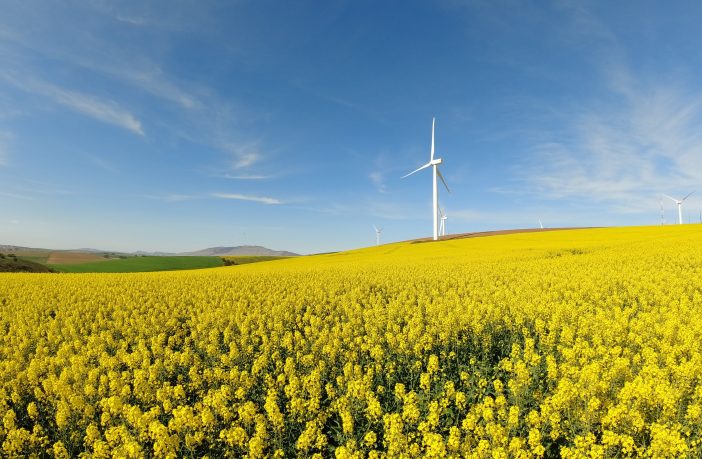Opinion
It is time for an Agriculture Green New Deal (AGND) in South Africa. It is time for a great transformation, one that factors the social, economic and environmental dimensions of the land question and not just market considerations. It is time to prioritise the right to food, dignity and degrowth so that people can believe in the national project again.
Radically reprioritising the land reform programme and overhauling the country’s rural infrastructure could transform the country’s agriculture and drive the post-Covid 19 recovery. Green energies and green infrastructure can play a pivotal role in this great transformation. We come back to this later. First, the case for accelerating land reform and making it work for more people.
The Case for Accelerated Land/agrarian Reform.
Almost three decades into the democratic dispensation, South Africa is still struggling with the land and agrarian reform project. It is an aberration that, over three decades into the democratic dispensation, South Africa is still defined by apartheid geography. It is everywhere. It is the first thing that foreign visitors notice when they arrive on these shores. It is always painful to watch people shift uneasily as they try to offer a cogent explanation to this persistent problem.
It is not hard to find poverty either. In every city, every small town, every dorp, people mill around with exhausted, forlorn-looking faces, unmoored, seeking peace jobs or a few coins to purchase their next meal. That should not be happening in a country with a combined GDP of 351 billion USD.
Land and agrarian reform were once touted as key answers to the country’s economic problems. They have unfortunately become political footballs over time. And yet, there cannot be any doubt about it: land reform is a key component of the agrarian transformation and the agrarian transformation is a key component of the socioeconomic transformation.
Too often, the government has let the private sector dictate debates about these issues. The one key argument that comes up about land reform is that if land is taken from white farmers and handed over to blacks who have no experience in farm management, it could lead to food insecurity.
Expropriation without compensation is certainly not the answer. At the same time, land reform must be accelerated for the good of the country. The threat of food insecurity is predicated on wrong assumptions, e.g. that all white-owned farms produce food for the markets (not true); that all transferred lands must produce for the markets (not realistic), and that the government has enough time and resources to operate an orderly transfer land to a group of people who are not just willing but also able to make successful businesses of their land (again, unrealistic).
These assumptions ignore the hunger crisis in the country. Here’s the thing – we are talking about just under 50% of the country here. That’s right, almost half of the country cannot afford what they sell on supermarket stands regularly and so, dramatically shifting how agriculture is done in the country will transform South Africa without negatively impacting food value chains. Delays in transformation are causing unrest and the process must be accelerated. The government’s fear of more farm failures should not lead to a reduction of reform
The Environmental Argument.
At the same time, while we talk about land and agrarian change, we cannot forget that the world around us is also changing dramatically due to anthropogenic action. We see ecological collapse everywhere. South Africa is the 12th largest emitter of greenhouse gases in the world, largely due to its coal power fleet. The recent IPP deals with Karpowership will see the country dump even more CO2 in the atmosphere.
Agriculture, forestry and other land use (AFOLU) is the second biggest emitter of greenhouse gases in the country. The large-scale commercial farms (LSCF) that dominate South African agriculture use up more than 60% of the country’s available water. Current AFOLU practices which rely on frequently turning the earth, sometimes twice a year, to sow crops means that LSCF constantly release vast amounts of CO2 into the atmosphere. These LSCF must manage water and CO2 better, and it is a good thing that the biggest farmers’ associations have started those conversations. However, more still needs to be done by the agriculture sector in particular and the country in general.
Transformation is needed to ditch fossil capitalism and unlock the economy’s potential for millions of more people. Small policy shifts are not enough; only radical, transformative ideas that fundamentally shift the way the country operates can unlock a greater distribution of wealth for all citizens and shake the country back into an exciting forward trajectory.
An Agriculture Green New Deal: the role of Green Infrastructure.
The recently published UNEP Making Peace with Nature document argues that, going forward, human development has to be based on the following pillars:
- Sustainable economic and financial systems.
- Healthy, nutritious food and clean water and energy.
- Healthy lives and wellbeing for all in safe cities and settlements.
This, neatly summarised, is the path that South Africa must also follow. Interestingly, the ideas captured above all appear in the recommendations section of President Ramaphosa’s Land Reform Panel final report, i.e. transformed cities, transformed agriculture that prioritises not just LSCF but small ones as well, equity and accountability, democratic control of resources, etc. This, in many ways, is a call for an AGND in South Africa.
So how will this work in practice. Land reform projects typically fail due to a number of reasons, including the size of the project, a lack of resources and a lack of infrastructure. Clear answers have to be developed to address these issues in future projects.
First to farm plots. The national government should identify all immediately available farmland as well as receive donations from churches, business, the private sector etc., and subdivide it into plots. Plot sizes should be capped and new plots titled as soon as possible so as to give property owners the ability to raise money for their projects. In a previous opinion, I have argued that new farm plots should be as small as 20 hectares. Former President Zuma had the One Farmer One Hectare programme. I say One Farmer, Twenty Hectares. Someone else may decide for slightly bigger plot size, but for me, the most important thing is to keep farm plots small. LSCF require a lot of investments and labour and it will take an incredible length of time to create a thriving business on every single farm if only this type of agriculture is to be prioritised. Land reform beneficiaries should ideally first produce food to meet their own needs before they think about markets.
Secondly, to technology. Green technologies can provide key solutions to the problems that farmers face on a daily basis. We know that electricity supply is a major challenge in South Africa. Provincial governments should invest in small solar farms to help kill many birds with one stone. With solar farms in rural areas, famers can get steady electricity supply for farm mechanisation and hydroponics. Solar power can also be used to draw water for irrigation systems in an integrated production basin.
One of the biggest complaints from land reform beneficiaries has always been the lack of steady water supply for their projects. West Africa has some very interesting success stories in this area. Within the framework of the Great Green Wall project which aims to plant millions of trees along 100 million hectares of the Sahel belt, Senegal has been building small solar farms to provide water for the trees alive. One side benefit of these solar farms is that they are providing water for rural gardens, in addition to powering schools with electricity. South Africa is a water-stressed country and similar solutions are needed to help emerging farmers run successful projects. In villages with irregular electricity supply, the power from the farms can also be used to power schools, hospitals and businesses. To go even further, the government can empower villages to build and operate their own grids.
In urban areas, municipalities should invest more in green infrastructure. Green spaces and all the lifeforms that occupy these spaces play a vital role in our lives. Spending time in nature is a good way to relax and take our minds away from all the pressures that cause stress. For this reason, more investments should be made to build more integrated suburbs. This means making more investments in green energy and green buildings to ensure that we have smarter cities where people enjoy living and walking.
Wherever possible, public gardens should also be set up for people who want to grow some vegetables or flowers for their homes. Again, green technologies can help with mobility, irrigation, lighting, powering of community centres, schools, and hospitals and so on. In this way, we make land reform work, not only in rural areas, but also in urban areas where overcrowding is a big problem in some suburbs. An Agriculture Green New Deal can completely reshape the South African landscape and give it clean food, cleaner air and thriving, resilient communities. We must believe that this is possible – and then make it happen.
Conclusion.
We must be ambitious – and we must believe in the power of big dreams. For example, when Deng Xiaoping started laying the groundwork for China’s modern economy in 1978, he told a gathering of the Chinese Communist Party that “we need large numbers of pathbreakers who dare to think, explore new ways and generate new ideas…otherwise, we won’t be able to rid our country of poverty and backwardness or to catch up with—still less surpass—the advanced countries.”
China’s GDP at the time was just 149 billion USD. Its real per capita GDP was worse than the Republic of Chad’s (which stood at 1.1 billion USD at the time). Forty-three years later, the Chinese economy is worth a staggering 14 trillion USD. Chad on the other hand, has a GDP of 11 billion USD today (it is ranked 187th out of 189 countries in the 2019 Human Development Index). One country had a plan, the other did not. How did Deng’s dream become reality? A simple plan: 1) copy the best; and 2) pursue goals with dogged determination.
South Africa has a headstart on China. Its economy is more than double where China started its modern project from over forty-three years ago. It is time to engineer a great agricultural transformation here. It is time for an Agriculture Green New Deal.
Author: Dr Roland Ngam
Dr Roland Ngam is programme manager for climate justice and socioecological transformation at the Rosa Luxemburg Foundation, Southern Africa.The views expressed are not necessarily those of the Rosa Luxemburg Foundation or Green Building Africa.
















